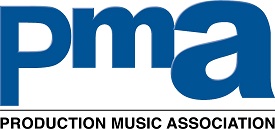Opportunities, Challenges & Threats: Production Music at a Crossroads
In the media world, production music is a vital component of sound-for-picture. These sonic libraries – which can range from specialized boutiques to all-encompassing collections numbering in the thousands – provide music supervisors, music editors, producers, and other media pros with a ready-to-go availability that composers and licensed artist tracks are hard-pressed to match.
Last month, Randy Thornton was named Chairman of the Production Music Association (PMA), the non-profit organization which promotes and protects the rights and interests of publishers and composers of music for use in film, television, radio and new media. But Thornton, who is also CEO of Warner/Chappell Production Music – a versatile conglomerate of multiple independent libraries – knew that being the Big Cheese wouldn’t be a cakewalk.
Put simply, the pressure has been turned up in production music, a sector which had enjoyed relative stability for years even as the rest of the music industry turned chaotic around it. Just as the number of production music catalogs and creators are proliferating, their customers have less to spend. Meanwhile, the retitling of tracks – a legal technique that allows rights holders to place the same song in multiple non-exclusive libraries – often creates confusion in step with revenue.
Thornton spoke with SonicScoop on the eve of the PMA’s NYC meeting taking place on Thursday, October 11th (open to members and non-members alike, see the full details here). Entitled “The Future of Production Music: Opportunities, Challenges & Threats,” the event will pull no punches regarding the current crossroads for the organization and its members – in this interview, the Chairman clarified what’s on the table for the PMA today.
It’s one thing to be a dues-paying member of an organization, but another to take part in its leadership: What first made you decide to take an executive role in the PMA, starting as a board member?
I have always felt that the PMA was a much-needed organization, and since the early days of its inception have been a huge supporter of its initiatives.
Over the past 4+ years, having served as a member of the board of directors, I feel even more strongly that the PMA is uniquely positioned to bridge the gap between the needs of our industry and our clients. When the board of directors asked me to step up and accept the position of Chairman, I was happy to do so knowing that I would be able to continue to work closely with our membership and board of directors.
Taking that one step further, what will having the position of chairman allow you to do for the organization and its membership?
I feel that the biggest challenge currently facing the production music industry is that of maintaining the value of our music in the marketplace. If I can contribute to that goal in some small way, I feel that I will have successfully served our membership!
Looking at the landscape right now, how would you describe the current professional environment that production music professionals work in?
The current environment is one of increasing competition for ever-dwindling budgets. The upside is that there are more potential clients than ever. The downside is that many clients are being squeezed financially and are therefore pressured to look for “alternative sources/practices” for production music, many of which are detrimental to the sustainability of the industry as a whole.
And how is that different from the way things worked five or ten years ago?
The PMA now represents over 450 catalogs, representing a 10-fold expansion of our industry from just 10-12 years ago. Financial pressures brought about by fragmented TV, film and New Media industry segments have caused an environment where both music suppliers and consumers are struggling to understand consequences of differing licensing models while trying to analyze the cost/benefit advantages of each.
You said in your press statement upon being named Chairman, “I look forward to working with our membership to help bring about positive change”. Can you elaborate on what some of these positive changes would be?
I feel that it is critical that we strive to maintain or elevate the value of our music, thus enabling a viable financial future for our industry as a whole.
The PMA works to accomplish this through education of our membership, our clients, and the next generation of production music professionals looking to make their mark in the marketplace. Education and a commitment to understand current needs on both sides of the fence are crucial to ensuring real progress for our industry.
You also advocated “awareness of critical issues impacting our industry’s long-term sustainability.” Can you please elaborate on what the most pressing issues are in this respect?
The PMA has been very active in working with the performing rights organizations to adopt digital recognition software in order to more accurately identify broadcast performances as well as insuring the fair distribution of performance royalties.
Additionally, we have worked to support the PRO model for the licensing of performing rights. We have been very vocal about the destructive nature of “retitling” of musical works, and have worked tirelessly to uphold the integrity and value of copyrights. We look forward to working more closely with our international counterparts to help ensure the viability of our industry on a worldwide basis.
Lastly, aesthetically, how do you feel production music is evolving? In other words, in what ways is production music sounding better/worse/more creative/more diverse in 2012?
The production music industry has consistently grown in both size and quality over the past 10 years: Long gone are the days of clients bemoaning the fact that they “had to use a library cue”. The creative and production values of current production music works are leading the world in many segments of the market, including the work of many GRAMMY and Emmy award-winning composers and producers.
Clients have a huge choice these days when it comes to choosing music, and their choice more often than not centers around creativity and production values — both of which are good news for our industry!
– David Weiss is the Founder/Editor of SonicScoop, and co-author of the book Music Supervision: Selecting Music for Movies, TV, Games & New Media.









Jon
October 22, 2012 at 4:41 pm (12 years ago)Thanks for the great article David! Question question . . . how is retitling a “legal technique”?
Jon
October 22, 2012 at 4:41 pm (12 years ago)Great article David! I have an important question . . . how is retitling a “legal” technique?
Desire Inspires
March 12, 2013 at 6:33 pm (12 years ago)I think I solved the retitling problem. 🙂
One thing I recently learned about BMI and ASCAP is that titles really do not matter. Each time a song is registered, a new Work ID is formed.
I could register the same title with me as the songwriter and a different publisher for each version. The work ID would be unique to that particular registration.
Music libraries and publishers should use the work ID instead of the song title to add to a cue sheet. That Work ID is as unique as DNA. That alone would solve all retitle issues.
Thoughts?